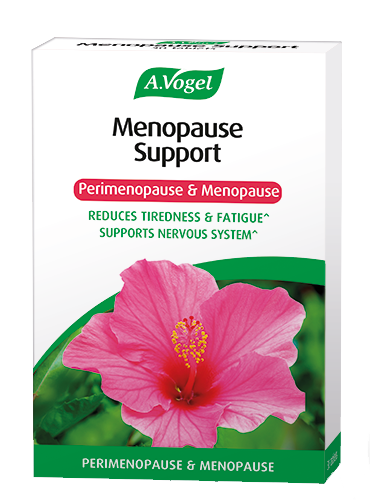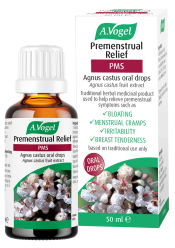An introduction to aching muscles
Around your ‘time of the month’ you are particularly vulnerable to a whole list of ailments. Believe it or not, the list of menstrual period symptoms isn’t short and muscle and joint aches and pains definitely make an appearance. Very slight niggles can become exacerbated as a result of a barrage of hormones and chemicals (and sometimes a lack of!) circulating around your body.
On this page I discuss some of the reasons why your menstrual cycle can give rise to muscle and joint pain. Understanding what is going on inside your body means you have a better chance of tackling your issues. I then go on to discuss some useful home, herbal and conventional remedies that can help.
How can your period cause aching muscles and joints?
There are several reasons why you might find your muscles and joints are particularly sensitive around the time of your period as I discuss below.
- Hormones – You might find the effects hormones can have on muscles and joints surprising and these are often overlooked. Between ovulation and your period, the hormone progesterone is dominant compared to oestrogen. There is some evidence to suggest that progesterone may have some suppressing action on the immune system. Research has suggested that women who are on progesterone-only contraceptives may be more susceptible to viral infections. This means your immune system has to work harder to fight off invading pathogens and your joints can suffer as a result. Aching muscles and joints are a common symptom of the flu virus; as your immune cells have to put so much energy into fighting the invaders, your muscles and joints are abandoned and they can become uncomfortable. As you approach your period it is also important to take into the account the big drop in oestrogen you experience. Oestrogen is important for lubricating your joints and low levels can mean they can easily become dehydrated – this makes them more susceptible to irritation
- Prostaglandins – It is likely prostaglandins have a big part to play in muscle and joint aches and pains too. Prostaglandins are released from your womb in order to initiate contractions which ultimately give you your period. In excess, prostaglandins can diffuse past the womb into surrounding areas and also into your blood stream. As they diffuse into nearby areas, this is possibly why many women feel that their period pains can radiate into their backs and down their legs. If these hormone-like chemicals make it into your blood, they can exert a more widespread inflammatory response and many women experience aches and pains elsewhere as well as headaches
- Other inflammatory mediators – As well as prostaglandins, research has suggested that other inflammatory mediators such as C-reactive protein (CRP) may also have a part to play in some of the symptoms of periods including back, joint and muscle pain
- Magnesium – As your levels of important hormones drop, so can your levels (or efficiency) of certain minerals. Oestrogen can affect the uptake and utilisation of magnesium and sufficient levels are crucial for healthy muscles – low levels can result in aches, pains and cramps.
Federation of American Societies for Experimental Biology. (2013) Progesterone may be why pregnant women are more vulnerable to certain infections.
Gold, E.B., Wells, C and Rasor M.O. (2016). The association of inflammation with premenstrual symptoms. The Journal of Women’s Health. 25(9): 865-874
Diet, lifestyle and home remedies
If aching joints or muscles are particularly troublesome there are some home remedies and dietary and lifestyle factors that could help.
- Follow an anti-inflammatory diet rich in magnesium – Certain foods promote inflammation in the body whilst others have anti-inflammatory properties such as antioxidants which are particularly good for joints. Try to eat less saturated animal fats, processed foods, refined carbohydrates and sugar, caffeine and alcohol. Instead fill up on plenty of water, fresh fruit and vegetables including lots of green leafy veg, seeds, nuts, beans and oily fish in order to get a good amount of magnesium and anti-inflammatory omega-3
- Gentle exercise – Exercise helps to increase your blood flow which means oxygen can be efficiently delivered to your joints and muscles and waste materials can be swiftly taken away. Exercise also helps to increase levels of chemicals called endorphins. It is likely a lack of endorphins can affect your sensitivity to pain
- Apply some heat – Although often only a short term solution, heat can help to reduce pain in many cases. Applying heat helps local blood vessels dilate which allows more nutrients to be delivered to the affected area. Also, it is possible that activated heat receptors could temporarily block pain receptors
- Massage or acupuncture – Some alternative treatments may help to alleviate muscle or joint pain if they are particularly troublesome month after month. It might be worth your while contacting a good masseuse or acupuncturist.
Herbal remedies to help
There are some herbal remedies which can help you aching muscles and joints:
- Soy isoflavones – If your joint pain is cyclical it could be down to low levels of oestrogen. Soy isoflavones can help to gently restore the hormone balance. Other symptoms of low oestrogen include mood swings in particular feeling irritable and angry, water retention and painful, heavy periods
A.Vogel Menopause Support | For Perimenopause, Menopause & Postmenopause Symptoms
£8.99 (30 tabs) In Stock Get it tomorrow, 16th April.
- Devil’s claw – For muscles and joints or back ache, Devil’s claw is a licensed herbal remedy to help relieve the pain. Arnica is a nice topical alternative which is particularly soothing if you store it in the fridge before use.
Please note, if you are taking hormonal contraceptives such as the pill, hormone-balancing herbal remedies may not be suitable for you.
How can my doctor help?
If your muscle and joint pain is getting you down it might be time to pay your doctor a visit.
If your issue is related to hormones a form of hormonal contraception might be an option. In addition to, or instead of this, anti-inflammatory medication might prove useful. Always make sure you are aware of side effects though (especially if you plan to use this longer-term) as many can cause digestive upset for example.









